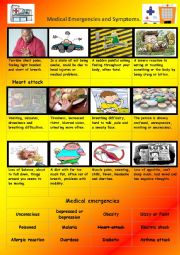
|
Medical Emergencies and Symptoms
Students read the symptoms, then match the correct medical term to each one.
Level: elementary
Age: 8-100
Type: worksheet
Downloads: 208
|
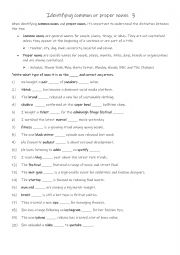
|
Identifying common or proper nouns 3
First, students need to familiarise themselves with the 2 types of nouns. Then they read the sentences to identify and use the correct punctuation for all of the sentences. Answers on page 2
Level: elementary
Age: 8-100
Type:
Downloads: 111
|
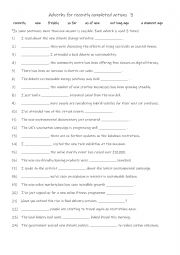
|
A2+-B17 different adverbs for recently completed actions 3
First, students need to familiarise themselves with the 7 adverbs. Then they read the sentences to work out which one is needed to complete the gap-fill. Each adverb is used 3 times! Answers on page 2
Level: elementary
Age: 10-100
Type:
Downloads: 107
|
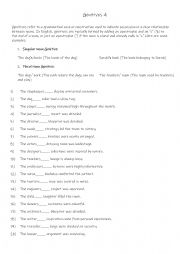
|
A1+-A2 Genitives (4)
This worksheet is suitable for A1+-A2 level students. Genitives refer to a grammatical case or construction used to indicate possession or a close relationship between nouns. Students complete the 20 sentences after reading the rules. Answers on page 2
Level: elementary
Age: 8-100
Type:
Downloads: 111
|
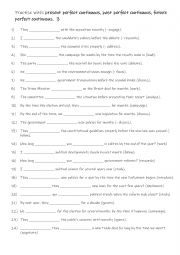
|
B1-B2 Practise with present perfect continuous, past perfect continuous, future perfect continuous. 3
By using these forms, students can enhance their narrative skills, link multiple events, and communicate more flexibly, making their speech and writing more natural, clear, and sophisticated. First, students need to familiarise themselves with the 3 tenses and use. Then they read the sentences to work out which one is needed to complete the gap-fil...
Level: intermediate
Age: 10-100
Type:
Downloads: 112
|
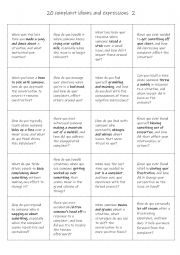
|
B1+-C1 20 complaint idioms and expressions 2
This is a speaking reinforcement activity to supplement the other worksheet I uploaded on 13/1/2025. Students working in pairs or small groups can either ask each other the questions or answer the question themselves.
Level: intermediate
Age: 12-100
Type:
Downloads: 109
|
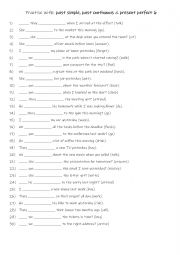
|
A1+ A2 Practise with past simple, past continuous & present perfect 6
First, students need to familiarise themselves with the 3 tenses and their use. Then they read the sentences to work out which one is needed to complete the gap-fill using the given verb in (). Each tense is used 9 times! Answers on page 2
Level: elementary
Age: 7-100
Type:
Downloads: 130
|

|
A2+-B1 Practise with 12 conditional phrases 4
First, students need to familiarise themselves with the 12 conditional phrases and their meanings and use. Then they read the sentences to see which one is suitable to complete the gap-fill. Each conditional phrase is used 2 times! Answers on page 2.
Level: elementary
Age: 9-100
Type:
Downloads: 131
|
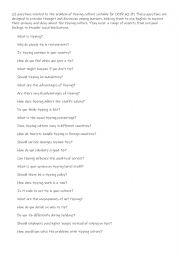
|
Tipping culture for CEFR A2-B1
25 questions related to the problem of tipping culture suitable for CEFR A2-B1 These questions are designed to provoke thought and discussion among learners, helping them to use English to express their opinions and ideas about the tipping culture. They cover a range of aspects from personal feelings to broader social implications.
Level: intermediate
Age: 15-100
Type:
Downloads: 123
|
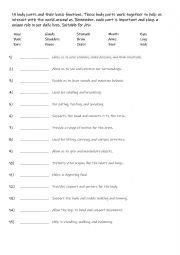
|
15 Body parts
15 body parts and their basic functions. These body parts work together to help us interact with the world around us. Students read the definition and select the correct missing word in bold.Suitable for A1+ Answers are on page 2
Level: elementary
Age: 10-100
Type:
Downloads: 122
|












